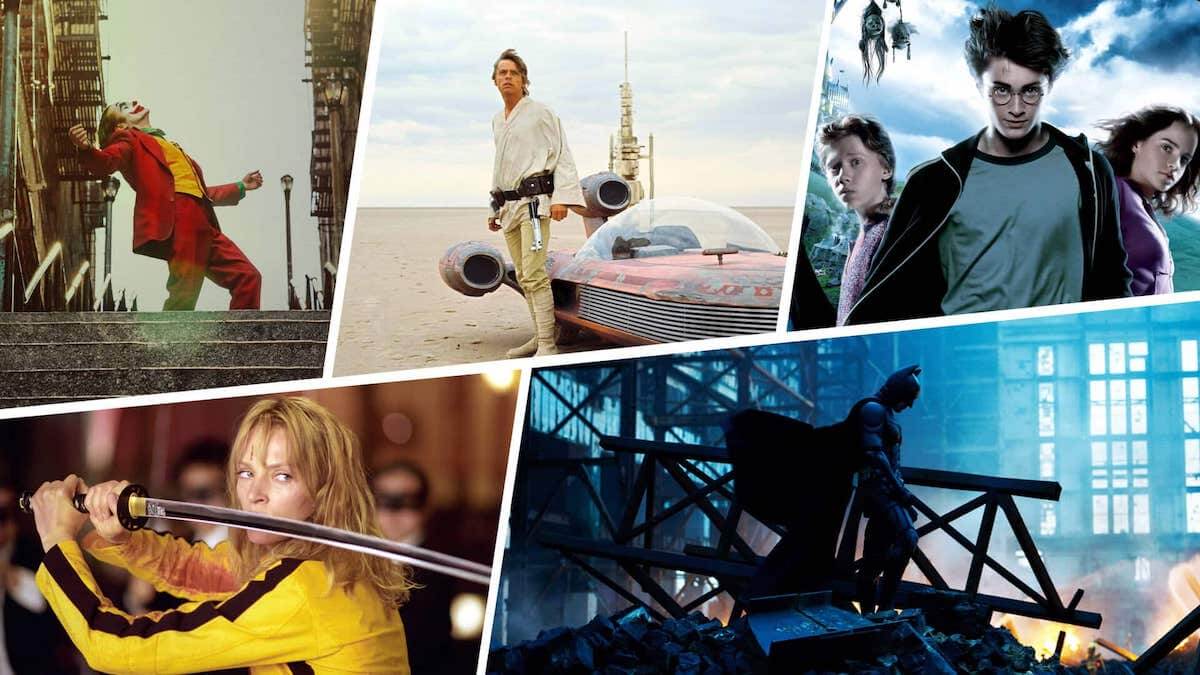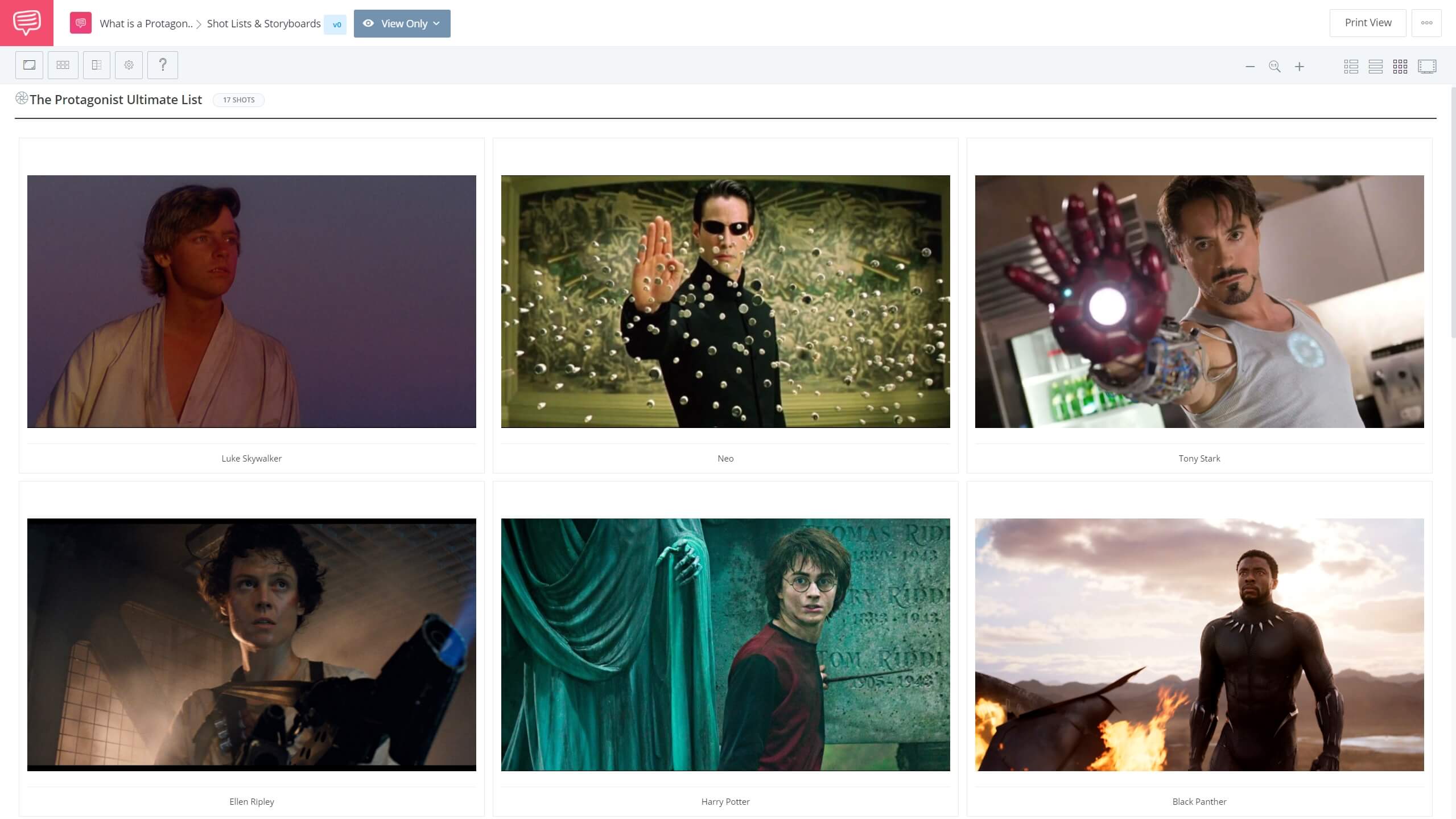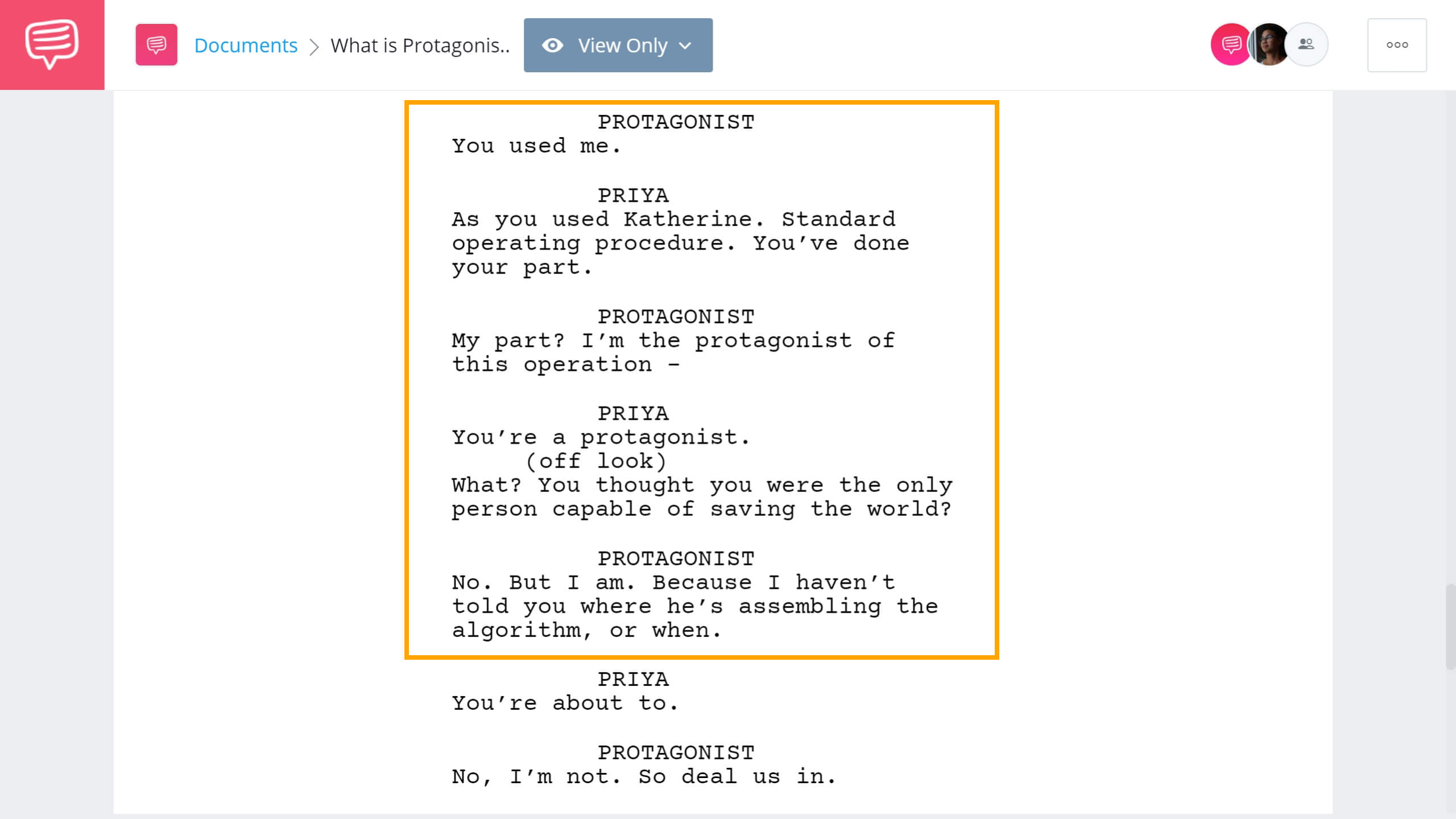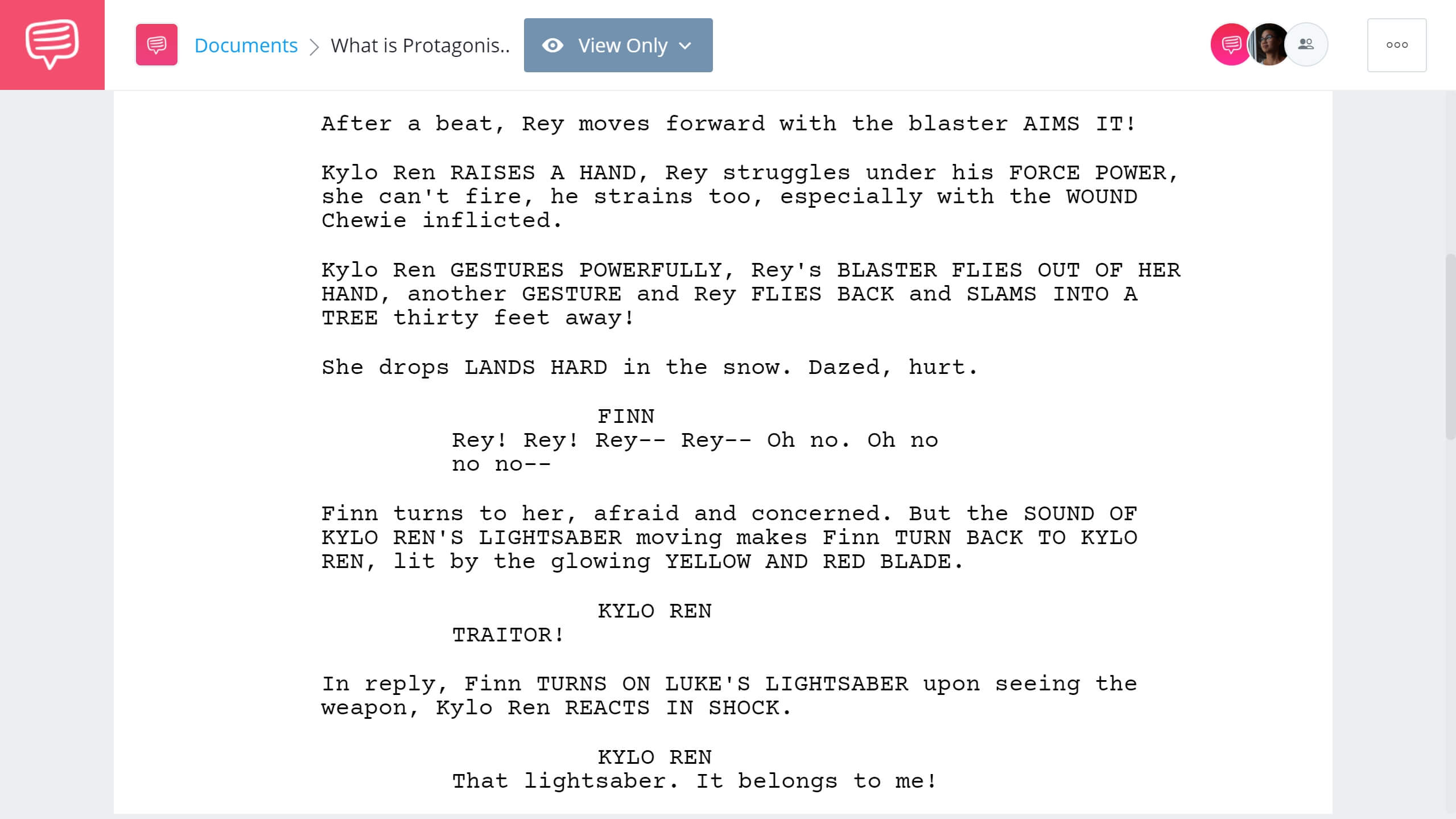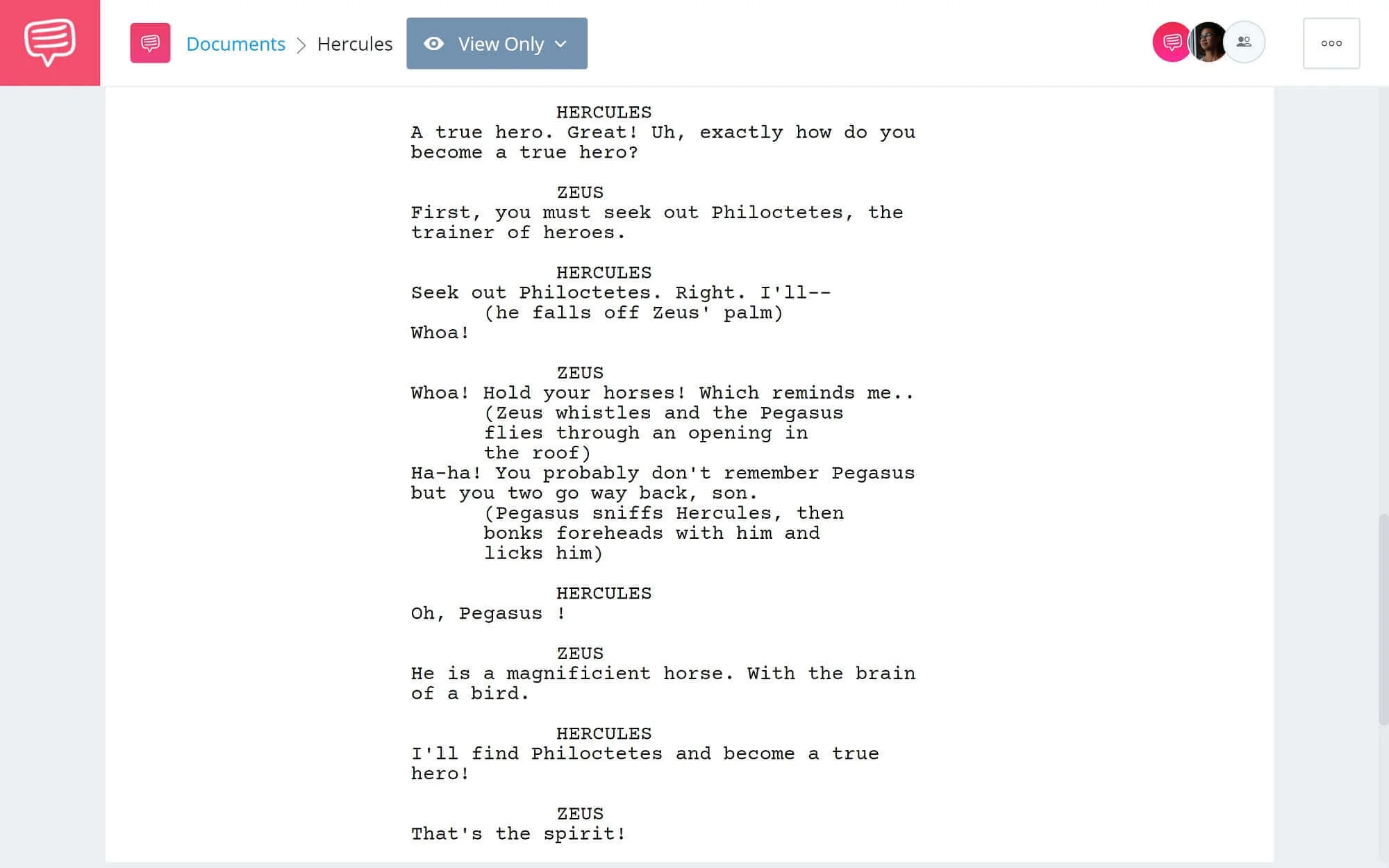What is a protagonist? Many refer to a protagonist as the leading character in a story. But is the protagonist something more? Or something less? To understand the definition fully, we need to look at how different types of protagonists are used in screenwriting. This will help us decide which type of protagonist works best for our scripts.
Protagonist Meaning
What Does Protagonist Mean?
Protagonists are used everywhere, from literature to video games to cinema. They’re used as a sort of character conduit to connect the reader/viewer/player to the world of that particular medium.
So: what does protagonist mean? We’re going to answer that question by looking at how protagonists are used in screenwriting with examples from Star Wars, Breaking Bad and more – but first, let’s define protagonist!
PROTAGONIST DEFINITION
What is a Protagonist?
A protagonist is a character who pushes a story forward. He or she is also the central force of the story. Derived from the Greek words prōtos and agōnistēs, “protagonist” quite literally translates to “first actor.”
Not every story has to have a protagonist though. Some stories have ensembles; a rare character structure in which the group collective pushes the story forward, not just the actions of an individual.
Characteristics of a Protagonist:
- Central Force
- Moves Story Forward
- Actions Build the Theme
- Battles with Rival: the Antagonist
Protagonist Definition
Popular protagonist examples
What are protagonists? Protagonists are the leading character in a story. Struggling to think of some protagonist examples? Here’s a list of protagonist examples in movies:
- Luke Skywalker in Star Wars
- Neo in The Matrix
- Tony Stark in Iron Man
- Ellen Ripley in Alien
- Harry Potter in Harry Potter
- King T’Challa in Black Panther
- Marty McFly in Back to the Future
- Ethan Hunt in Mission: Impossible
- Django in Django Unchained
- Captain Kirk in Star Trek
- Bilbo Baggins in The Hobbit
- Sarah Connor in The Terminator
- Rocky Balboa in Rocky
- Snake Plissken in Escape From New York
- Patrick Bateman in American Psycho
- James Bond in the James Bond movies
- Indiana Jones in the Indiana Jones movies
We imported these characters into StudioBinder’s storyboard creator software in order to create a filmic moodboard. You can download the mood board below and reference it at any time for character design inspiration!
Whats a Protagonist? • Ultimate Storyboard
Most (but not all) of these protagonists are similar – they’re heroic characters who serve as the driving force of their stories.
Protagonist Definition
What is a protagonist in a story?
A protagonist – no matter how you define protagonist – is a critical element of every story. The most simple and iconic type of protagonist is the hero. These characters are virtuous, brave and idealistic. Everything within their story points back to them; think Harry Potter, Indiana Jones, James Bond, etc. The adventure that these protagonist’s go on is widely referred to as the hero’s journey. But the hero is just one of many protagonist types available to writers.
In the 2020 movie Tenet, Christopher Nolan uses his protagonist (literally named The Protagonist) in a meta-sense; to comment on the pervasiveness of hollow-heroism in stories. I imported the Tenet screenplay into StudioBinder’s screenwriting software to highlight a short exchange that expertly articulates the point I’m trying to get across. Read it below and think about the character Priya associates the term “protagonist” with “one who’s capable of saving the world.”
Whats a Protagonist? • The Protagonist in Tenet
You don’t have to know anything about Tenet to understand the takeaway from this example, which is: protagonists come with all sorts of tropes and contrivances that we must be knowledgeable of when writing screenplays. With that note out of the way, let’s break down some different types of protagonists.
Who is the Protagonist in a Villainous Story?
Let’s define the protagonist anti-hero
Not all protagonists have to be virtuous, think Breaking Bad for example. Who’s the protagonist? Walter White, a nefarious character who also serves as the central force of the story.
These so called anti-heroes have become incredibly popular on TV, from
Mad Men to The Sopranos. But anti-heroes have also grown in popularity in films; a great recent example is Lou Bloom in Nightcrawler.
In this next video, we look at how director Dan Gilroy uses shot composition to build empathy for Bloom. But before Bloom was played on the big-screen by Jake Gyllenhal, he was just a character in a script. All the aspects of the anti-hero that we come to see visually were just words transcribed on page. But when a strong script foundation connects with great filmmaking, something truly extraordinary is created.
What is a Protagonist in a Story? • How Nightcrawler Creates Empathy with Eyes • Subscribe on YouTube
It becomes a bit more tricky to diagnose the antagonist when the protagonist is an anti-hero. Many would argue that some internal part of the anti-hero is the antagonist in and of itself. However, that’s not true.
Most protagonists have a tragic flaw; something that ultimately leads to their undoing. For heroes, this tragic flaw is usually rooted in an overabundance of charity, generosity, etc., while for anti-heroes, the tragic flaw more often has something to do with greed, insecurity, etc. A tragic flaw is not an antagonist, but rather one of many aspects of character development.
Related Posts
What are Protagonists Who Die Off?
What is a protagonist who’s false?
Sometimes, screenwriters subvert our expectations for a story-arc or a traditional plot structure by “killing off” who we presumed to be the protagonist. A great example of this is ~spoilers beware~ Ned Stark from Game of Thrones. The story begins with him as the central focus of the story. His mission is what guides our view of the story’s major themes. But then-boom-he’s gone!
Another classic example of the false protagonist can be found in one of Alfred Hitchcock’s best movies: Psycho. Marion (Janet Leigh) seems to be the protagonist of the film, but we quickly learn that director Alfred Hitchcock merely uses her as a decoy. This next video from The Discarded Image looks at how Hitchcock tricked us into believing Marion was the protagonist.
What is a Protagonist in a Story? • False Protagonist Examples in Psycho
We’re led to believe that Psycho is the story of Marion, but it’s really the story of Norman Bates. The way that Hitchcock uses the false protagonist allows him to manipulate the audience and exercise subversive creative control over the story. Ultimately, it’s a classic example of Hitchcock’s mastery of suspense.
What are Protagonists Who Support?
How to use a supporting protagonist
The supporting protagonist is often erroneously attributed to supporting characters. Just because a supporting character is closely intertwined with a story, it doesn’t mean that they are the protagonist.
Take Watson from Sherlock Holmes for example. He is both the narrator of Sherlock’s adventures and his sidekick. However, he’s not the protagonist. A good rule of thumb is to always suspect that if a story has a character’s name in the title, he or she is probably the protagonist.
There are examples, although rare, of supporting characters becoming main characters. One strong example of this is in the film Rosencrantz and Guildenstern are Dead. In this film, we see how two supporting characters from Shakespeare’s Hamlet become the central focus of their own story.
Writers often play with the idea of using the “supporting protagonist” for subversive effect. Take Star Wars: The Force Awakens for example: in this example, writers Lawrence Kasdan, J.J. Abrams, and Michael Arndt toy with the idea of tricking the audience into the idea of a false protagonist. As you’re reading, think about how Rey and Finn switch roles.
What is a Protagonist? • Star Wars: The Force Awakens
Of course, this “supporting protagonist” dynamic was an integral part of marketing The Force Awakens; Disney likely wanted to build mystery by keeping the identity of the protagonist secret before the trilogy came out. In the end, Rey emerged as the definitive protagonist of the series – but not before Finn got his time in the limelight.
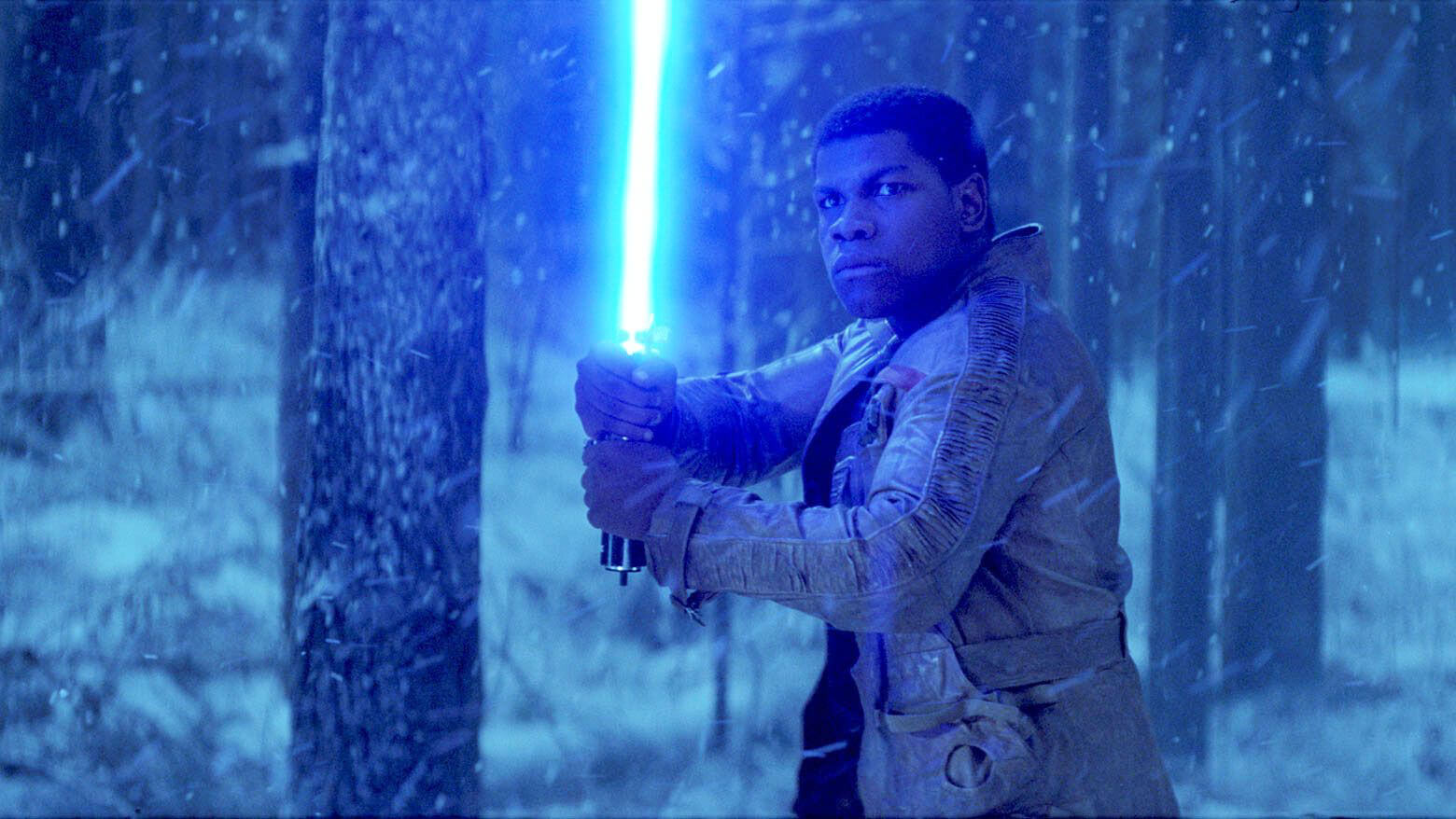
What is a Protagonist in a Story? • Star Wars: The Force Awakens
Remember, for a protagonist to be a protagonist, the story must revolve around them. The sequel trilogy revolves around Rey, not Finn. There are “Finn-centric” arcs (especially The Force Awakens) but the major arc is centered around Rey.
Double Protagonist Meaning
What are protagonists in groups used for?
Let me preface this section by saying the double (or triple) protagonist is rarely ever used. Why? Because it’s not a “character” nor an ensemble group. It’s a very specific type of protagonist vehicle that carries two or three people through to a destination.
It may be helpful to think of this “group protagonist” structure through the lens of The Three Stooges. The Stooges were a group of three comedic characters who, in a structural sense, operated symbiotically.
Here’s a great example from the Step Brothers script that shows why its two main characters, Brennan and Dale, can be considered dual protagonists.
What are Protagonists in Step Brothers? • Dual Protagonists Explained
In this moment, Brennan and Dale achieve their dream of becoming respected musicians by supporting each other in equal measure. In many ways, the script makes a point to highlight the ways in which Brennan and Dale are mirror images of each other.
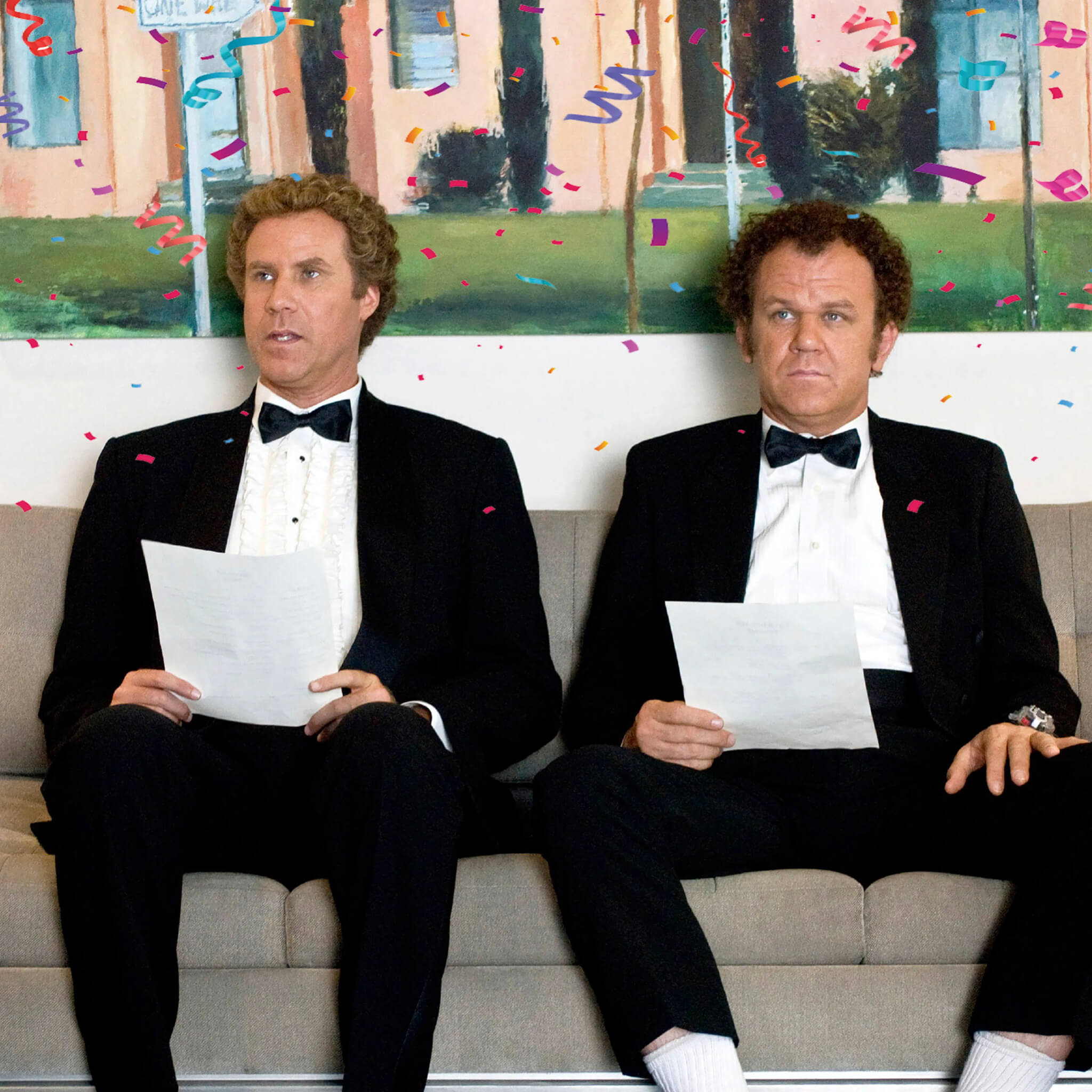
Whats a Protagonist? • The Dual Protagonist
As such, we can say that although they’re two people, they occupy the role of a dual protagonist.
What is a Protagonist Today?
Protagonists in Film Today
So, after looking through the different types, I think we’re ready to answer the question: what is a protagonist? A protagonist is the center of a movie. Everything revolves around them and they push the story forward.
The more important question is: what are the benefits of understanding the function of a protagonist? The answer to that question is just as clear as the answer to the first. By understanding the function of a protagonist, we’re better prepared to tackle character conflict in our own screenplays.
But to understand character conflict, we need to look at the opposite of protagonists as well: aka antagonists.
Protagonist vs. Antagonist
What is a Protagonist and Antagonist?
Protagonists and antagonists operate in a symbiotic relationship with one another.
Perhaps a good way to explore protagonists is to examine their opposite - the antagonist.
Here’s an example of how conflict is created and resolved with a protagonist and an antagonist.
The protagonist: Character A wants thing X.
The antagonist: Character B wants thing Z.
Things X and Z are opposite one another.
Let’s plug in for those variables, working with Return of the Jedi.
Protagonist and Antagonist in Star Wars
The protagonist: Luke Skywalker wants to bring balance to the force.
The antagonist: Darth Vader wants Luke to turn to the dark side.
Notice how these two things work against each other? This is because the protagonist vs. antagonist struggle is the most common example of character conflict. The moment in which these characters and the things they want clash is called the climax.
UP NEXT
What is an Antagonist?
Now that we’ve looked at the different types of protagonists with some examples from film and television, let’s do the same with antagonists. In this next article, that’s exactly what we do! With examples from The Birds, Kill Bill, and more, we’ll see how well-built antagonists can elevate a story to new heights.
